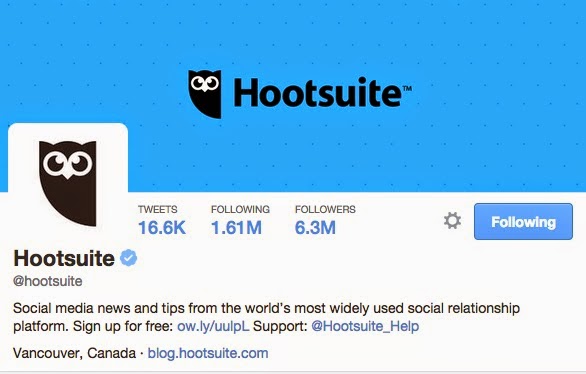9 Steps to Your Social Strategy: Step 8 - List Your Influencers!
In the strategy process, you need to list the key Influencers or Giants in your community. Influencers or Giants are those who will help you distribute your message to their trusting followers. Influencers are critical in growing your followers. Quality Influencers will help your social trust factor and growth. A quality Influencer or giant is someone who is in a complementary, not competitive, business, and has the same target followers as you do.
Having a quality Giants retweet your tweets, share your Facebook Posts, or RePin your posts on Pinterest is the fastest and most effective way to grow. It is speaking to your target market through someone they already trust. For example, if your goal is to be recognized as a leader in leveraging social media for businesses, an industry giant you might look to would be Hootsuite. As their account strives to be a leader in social media news and tips.
Another creative approach to working with an Influencer
is to invite them to your events, and ask them to tweet or do their voodoo
while attending! I have heard successful stories of inviting Influencers to
events or asking them to share or retweet in exchange for coupons or other VIP
treatments.
 Who: Social Media ‘Giants’ have many quality
followers. They can be individuals with
large followers, Business Associations, Media, Local Celebrities, Sports
Groups, Vacations spots, industry experts. On the side of the giant's twitter page you will see a list of followers you follow already that also follow this giant. This is useful to make sure you are following the right giant.
Who: Social Media ‘Giants’ have many quality
followers. They can be individuals with
large followers, Business Associations, Media, Local Celebrities, Sports
Groups, Vacations spots, industry experts. On the side of the giant's twitter page you will see a list of followers you follow already that also follow this giant. This is useful to make sure you are following the right giant.
What are they
contributing: Share or retweet &
using consistent keywords if they are commenting on your behalf.
Why are they
contributing: Passion, sense of
pride, desires to help drive your mandate, and growing their own business or
cause.
Criteria:
Measure the impact of your Influencers/Giants
• Increasing
numbers of retweets & sharing.
• Increasing
use of your selected keywords by these Influencers.
• Increasing
number of quality visitors to your website from the Influencers’ shares or
retweets.
•
Mentions, posts, photos, and videos live from your events.

